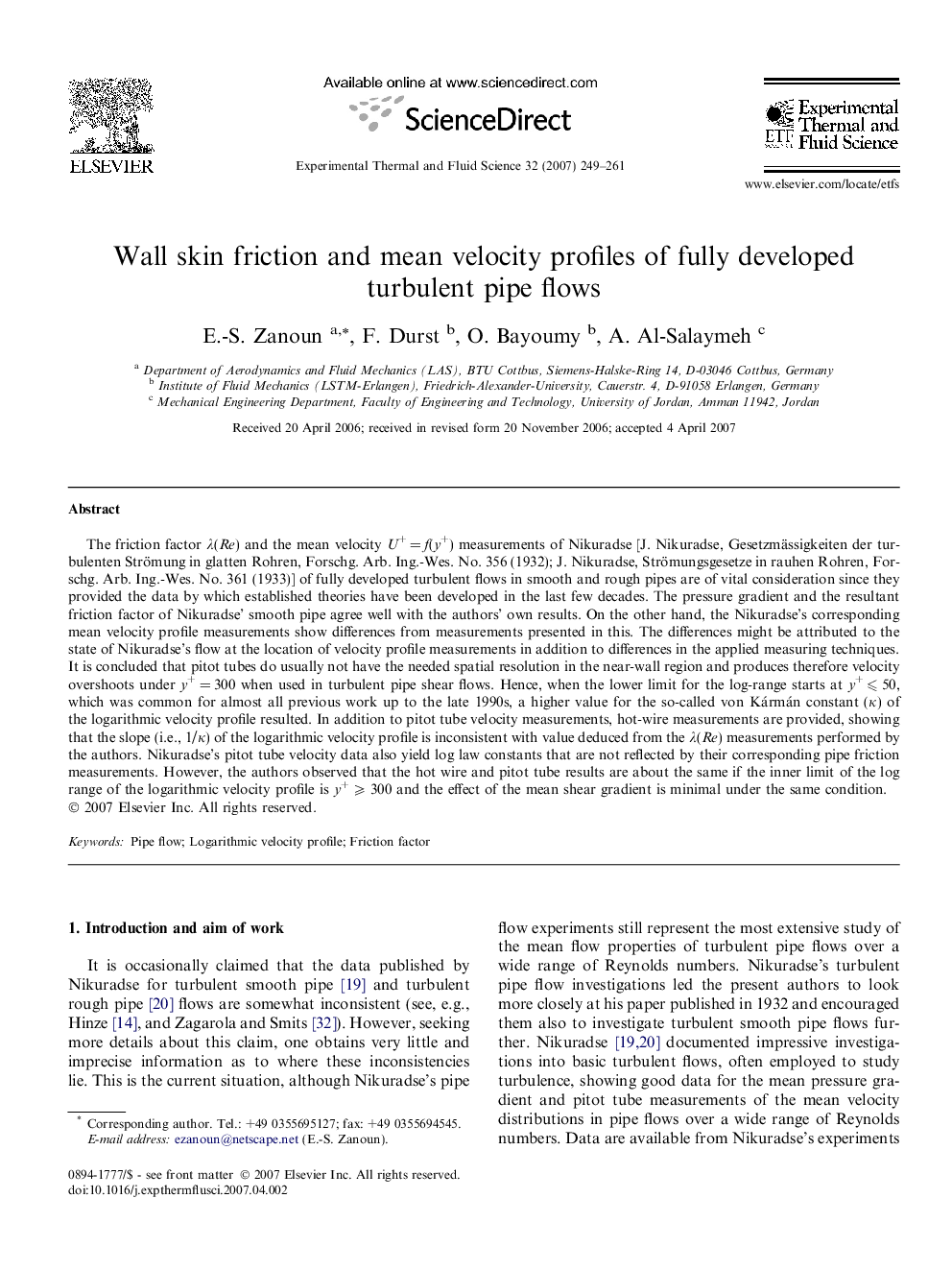| Article ID | Journal | Published Year | Pages | File Type |
|---|---|---|---|---|
| 652702 | Experimental Thermal and Fluid Science | 2007 | 13 Pages |
The friction factor λ(Re) and the mean velocity U+ = f(y+) measurements of Nikuradse [J. Nikuradse, Gesetzmässigkeite der turbulenten Strömung in glatten Rohren, Forschg. Arb. Ing.-Wes. No. 356 (1932); J. Nikuradse, Strömungsgesetze in rauhen Rohren, Forschg. Arb. Ing.-Wes. No. 361 (1933)] of fully developed turbulent flows in smooth and rough pipes are of vital consideration since they provided the data by which established theories have been developed in the last few decades. The pressure gradient and the resultant friction factor of Nikuradse’ smooth pipe agree well with the authors’ own results. On the other hand, the Nikuradse’s corresponding mean velocity profile measurements show differences from measurements presented in this. The differences might be attributed to the state of Nikuradse’s flow at the location of velocity profile measurements in addition to differences in the applied measuring techniques. It is concluded that pitot tubes do usually not have the needed spatial resolution in the near-wall region and produces therefore velocity overshoots under y+ = 300 when used in turbulent pipe shear flows. Hence, when the lower limit for the log-range starts at y+ ⩽ 50, which was common for almost all previous work up to the late 1990s, a higher value for the so-called von Kármán constant (κ) of the logarithmic velocity profile resulted. In addition to pitot tube velocity measurements, hot-wire measurements are provided, showing that the slope (i.e., 1/κ) of the logarithmic velocity profile is inconsistent with value deduced from the λ(Re) measurements performed by the authors. Nikuradse’s pitot tube velocity data also yield log law constants that are not reflected by their corresponding pipe friction measurements. However, the authors observed that the hot wire and pitot tube results are about the same if the inner limit of the log range of the logarithmic velocity profile is y+ ⩾ 300 and the effect of the mean shear gradient is minimal under the same condition.
